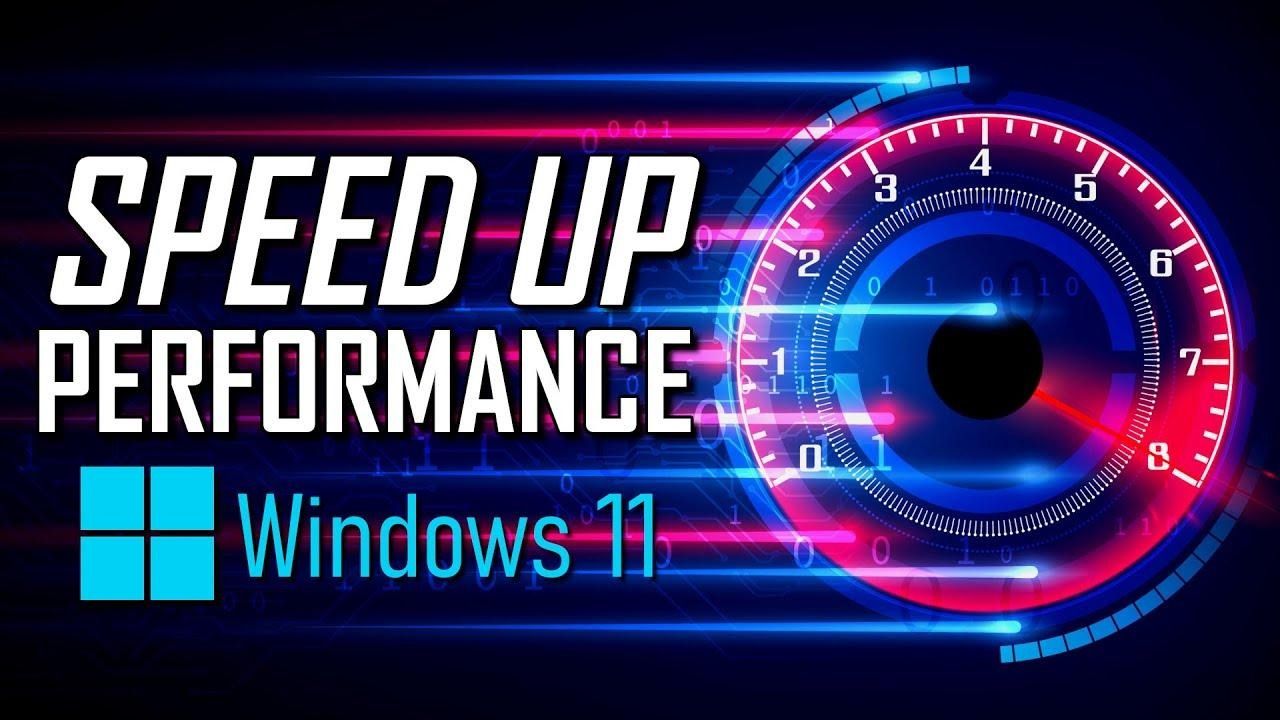

Optimizing your Windows 11 PC’s performance is crucial for a smooth computing experience. Let’s learn more about this topic below with Unicycle Hero, as we explore effective ways to speed up your system and enhance its overall efficiency.
Windows 11, the latest operating system from Microsoft, offers a sleek and modern interface along with numerous features. However, like any operating system, it can benefit from performance tweaks to ensure optimal speed and responsiveness. In this comprehensive guide, we’ll delve into various methods to boost your Windows 11 PC’s performance, from simple adjustments to more advanced techniques.
One of the most effective ways to speed up your Windows 11 PC is by optimizing the startup process. When your computer boots up, numerous programs and services launch automatically, which can significantly slow down the startup time and overall system performance.
To manage startup programs, open the Task Manager by right-clicking on the taskbar and selecting “Task Manager” or pressing Ctrl + Shift + Esc. Navigate to the “Startup” tab to view a list of programs that launch at startup. Disable unnecessary programs to reduce boot time and free up system resources.
Consider using the Unicycle Hero approach to categorize your startup programs. Identify essential programs that you need immediately upon startup and keep them enabled. Disable or delay the launch of non-essential applications to improve boot times and initial system responsiveness.
Additionally, you can use the “Startup Apps” section in the Settings app to manage startup programs. This provides a user-friendly interface for enabling or disabling startup items, making it easier to streamline your boot process and enhance overall system performance.
Efficient storage management is crucial for maintaining a fast and responsive Windows 11 system. Start by running the built-in Disk Cleanup utility to remove unnecessary files, temporary data, and system files that accumulate over time. This can free up valuable disk space and improve system performance.
To access Disk Cleanup, right-click on your primary drive (usually C:) in File Explorer, select “Properties,” and click on the “Disk Cleanup” button. Choose the files you want to remove and click “OK” to start the cleanup process. Consider running this utility regularly to keep your system tidy.
Another effective method to optimize storage is by using the Storage Sense feature in Windows 11. This automated tool helps manage your disk space by removing unnecessary files and temporary data. To enable Storage Sense, go to Settings > System > Storage and toggle on the “Storage Sense” option.
For a more thorough approach, consider using the Unicycle Hero method of storage optimization. This involves categorizing your files, moving rarely used data to external storage, and organizing your folder structure for easy access and improved system performance.
If you’re using a traditional hard disk drive (HDD), consider upgrading to a solid-state drive (SSD). SSDs offer significantly faster read and write speeds, which can dramatically improve your system’s overall performance, including faster boot times and quicker application launches.
Windows 11 offers several built-in tools and settings to optimize system performance. Start by adjusting your power plan to favor performance over energy savings. Go to Settings > System > Power & battery and select the “Best performance” option under the “Power mode” dropdown menu.
Next, fine-tune your visual effects settings. While Windows 11’s visual elements are aesthetically pleasing, they can impact system performance, especially on lower-end hardware. To adjust these settings, search for “Performance Options” in the Start menu and open the “Adjust the appearance and performance of Windows” control panel.
In the Performance Options window, you can choose to let Windows decide what’s best, adjust for best appearance, or customize the settings. For optimal performance, select “Adjust for best performance” or manually disable visual effects you don’t need, such as animations and transparency effects.
Another way to enhance system performance is by managing your virtual memory. Virtual memory, also known as the paging file, is used by Windows to supplement your computer’s physical RAM. To optimize virtual memory, search for “Advanced system settings” in the Start menu and open the corresponding control panel.
In the Advanced tab, click on “Settings” under the Performance section. Go to the Advanced tab in the new window and click “Change” under Virtual memory. Uncheck “Automatically manage paging file size for all drives” and set a custom size for your paging file. A good rule of thumb is to set the initial size to 1.5 times your physical RAM and the maximum size to 3 times your RAM.
Managing background processes can significantly improve your Windows 11 PC’s performance. Start by reviewing the apps and services running in the background. Open the Settings app, go to Apps > Apps & features, and click on “Advanced app settings.” Here, you can manage which apps are allowed to run in the background.
Disable background app permissions for applications you don’t need running constantly. This can help reduce system resource usage and improve overall performance. Be cautious when disabling background apps, as some system processes and essential applications may require background access to function properly.
Consider using the Unicycle Hero method to categorize your background processes. Identify essential processes that need to run continuously, processes that can be scheduled to run periodically, and those that can be disabled entirely. This systematic approach can help you strike a balance between functionality and performance.
Additionally, review the services running on your system. Open the Run dialog (Windows key + R), type “services.msc,” and press Enter. In the Services window, you can disable or set non-essential services to manual start. Be cautious when modifying services, as some are crucial for system stability and functionality.
Regular maintenance and updates are essential for keeping your Windows 11 PC running smoothly. Start by ensuring your system is up to date with the latest Windows updates, drivers, and security patches. Open the Settings app, go to Windows Update, and check for any available updates.
Install all critical updates and consider enabling automatic updates to ensure your system receives the latest performance improvements and security fixes. Additionally, check for driver updates for your hardware components, such as graphics cards, network adapters, and audio devices.
Perform regular system maintenance tasks to keep your PC in top condition. This includes running built-in Windows tools like the Disk Defragmenter (for HDDs) or the TRIM command (for SSDs) to optimize your storage drives. To access these tools, search for “Defragment and Optimize Drives” in the Start menu.
Consider using the Unicycle Hero approach to create a maintenance schedule. Set reminders for regular tasks such as disk cleanup, system scans, and driver updates. This proactive approach can help prevent performance issues and keep your system running smoothly over time.
Windows 11 comes with various features and optional components that may not be necessary for every user. Removing unnecessary features can help reduce system overhead and improve performance. To manage Windows features, search for “Turn Windows features on or off” in the Start menu.
In the Windows Features window, review the list of installed features and uncheck those you don’t need. Be cautious when disabling features, as some may be required for specific applications or system functionality. If you’re unsure about a feature, research its purpose before disabling it.
Similarly, you can manage optional components through the Settings app. Go to System > Optional features to view and remove unnecessary components. This can help streamline your system and reduce resource usage, potentially improving overall performance.
Consider using the Unicycle Hero method to evaluate Windows features and optional components. Create categories based on their importance and usage frequency, then decide which ones to keep, disable, or remove entirely. This systematic approach can help you optimize your system without compromising essential functionality.
In conclusion, speeding up your Windows 11 PC involves a combination of optimizations, maintenance tasks, and smart resource management. By implementing the techniques discussed in this guide, you can significantly improve your system’s performance and responsiveness.
Remember that the effectiveness of these methods may vary depending on your specific hardware configuration and usage patterns. Experiment with different optimizations and monitor your system’s performance to find the best combination for your needs.